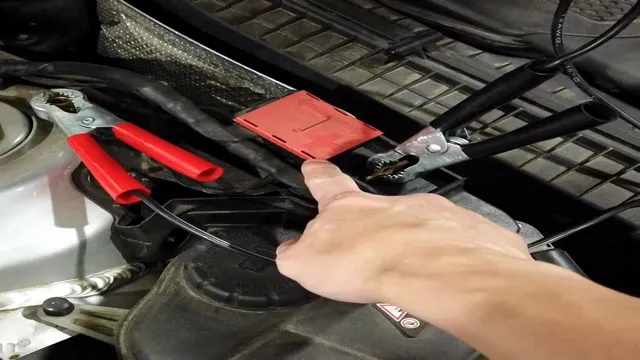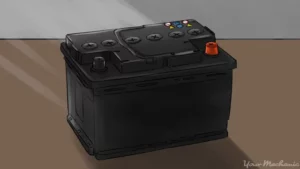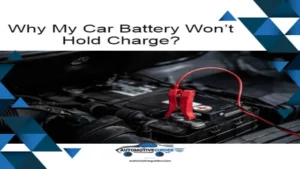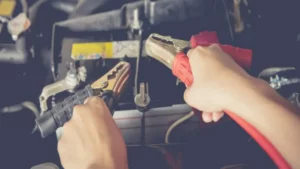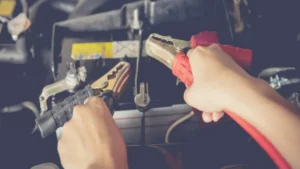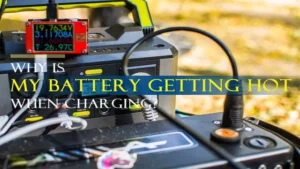Do you know how to hook up a car battery charger? Even if you have never done it before, it’s actually a straightforward process. With just a few steps, you can charge your car battery and get back on the road in no time. In this blog post, we will walk you through the steps of how to hook up a car battery charger, from choosing the right charger to correctly connecting the cables.
You don’t need to be a car expert to do it – let’s get started!
Safety Precautions
Hooking up a car battery charger may seem like an easy task, but it’s crucial to follow proper safety precautions to avoid any accidents. Firstly, make sure the charger and the car are turned off before connecting the cables. Inspect the battery for any cracks or leaks and wear gloves and safety goggles to protect yourself.
Then, connect the positive (red) cable to the positive terminal on the battery and the negative (black) cable to a bare metal surface on the car’s frame, away from the battery. Avoid connecting the negative cable to the negative terminal of the battery as it can cause a spark and ignite any gas vapors that may be present. Also, ensure the cables are not touching each other and start the charger on the lowest setting before gradually increasing it.
It’s essential to monitor the charger and battery closely and avoid overcharging it to prevent damage or explosion. Once the battery is fully charged, turn off the charger and remove the cables in reverse order (negative first, then positive). With these safety measures in mind, hooking up a car battery charger can be done quickly and efficiently.
Disconnect the Battery
When working on your car’s electrical system, one of the most important safety precautions you need to take is to disconnect the battery. This helps prevent any accidental shock or short-circuit that could occur while you’re working on the vehicle. To disconnect the battery, make sure the vehicle is turned off and the keys are removed from the ignition.
Locate the battery and use a wrench to loosen the negative cable first, then the positive cable. It’s important to start with the negative cable and not the positive one because the negative cable is connected to the vehicle’s chassis and removing it first avoids the risk of short-circuiting. Once both cables are disconnected, secure them away from the battery so they don’t come into contact with each other or any metal surfaces.
Remember to reconnect the positive cable first when you’re done working on the vehicle. Taking these simple precautions can go a long way in keeping you safe while working on your car.
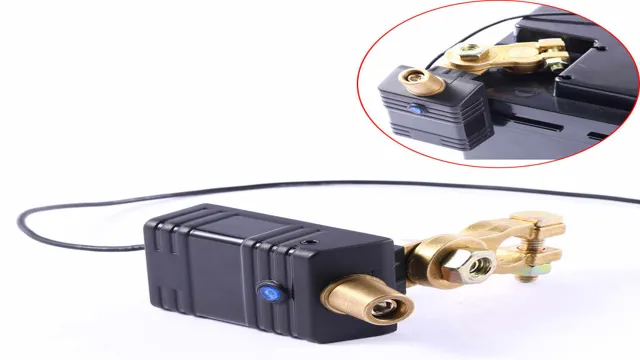
Choose the Right Charger
When it comes to choosing the right charger for your electronic devices, safety should always be your utmost priority. Not all chargers are created equal, and using the wrong one could result in serious consequences, such as electrocution, fire, or damage to your device. There are a few safety precautions you should keep in mind when selecting a charger.
Firstly, make sure the charger you choose is compatible with your device. Using a charger that is not designed for your device could cause it to malfunction or even cause a fire. Secondly, check the voltage and amperage of the charger, and make sure it matches the requirements of your device.
Using a charger with too high or too low voltage could damage your device or cause it to charge too slowly. Additionally, only purchase chargers from reputable manufacturers and retailers. Cheap chargers sold at discount stores or online marketplaces may seem like a good deal, but they could be poorly made and lack important safety features.
These chargers may also lack regulatory certification, which means they may not meet safety standards. In conclusion, choosing the right charger for your electronic devices is crucial for your safety and the longevity of your device. Take the time to research and purchase chargers from reputable sources, and always make sure the charger you choose is compatible with your device and has the correct voltage and amperage requirements.
With these safety precautions in mind, you can confidently charge your electronic devices and avoid any potential hazards.
Hooking Up the Charger
So, you’ve got a dead car battery and need to know how to hook up a car battery charger? It’s not as complicated as it may seem. First, make sure the charger you have is compatible with your car’s battery, and read the instructions thoroughly before beginning. Next, locate the battery in your car- it’s usually under the hood or in the trunk.
Turn off your car and all of its electrical components, including the lights and the radio. Attach the charger’s positive cable, marked with a “+” sign, to the positive terminal on your battery. Then, attach the charger’s negative cable, marked with a “-” sign, to the negative terminal on the battery.
Lastly, plug in your charger to a power outlet and turn it on. Most chargers will have a gauge to indicate when your battery is fully charged. Remember to always be careful when dealing with car batteries, wear protective gear, and follow all instructions to ensure your safety.
With a little bit of know-how, you’ll be back on the road in no time!
Connect the Charger to the Battery Terminals
When it comes to hooking up your battery charger, it’s important to know how to properly connect it to the battery terminals. First, ensure that your charger is suitable for the type of battery you have. Then, locate your battery and identify the positive and negative terminals.
The positive terminal will typically have a “+” symbol and the negative terminal will have a “-” symbol. Connect the charger’s positive cable to the positive terminal and the negative cable to the negative terminal. Make sure the cables are securely fastened and there are no loose connections.
Once everything is in place, turn on your charger and let it do its job. Remember to always follow the manufacturer’s instructions and safety precautions when charging your battery. By doing so, you’ll ensure that your battery is properly charged and ready to go when you need it.
Set the Charger Settings
Setting up a charger can be a simple process if you know what you’re doing. First things first, it’s important to check your battery’s specifications to ensure that you’re using the right type of charger. Once you’ve confirmed compatibility, you can hook up your charger by plugging it into a wall socket and connecting the positive and negative leads to their respective terminals on the battery.
Now, it’s time to set the charger settings. Depending on the model of your charger, you may need to adjust the settings to match your battery’s voltage and type (e.g.
AGM, flooded, etc.). Some chargers even come with a built-in microprocessor that automatically adjusts the charging process for maximum efficiency.
Don’t forget to keep an eye on the charger’s progress, as overcharging can damage your battery. With the right charger settings, you’ll be able to safely and effectively charge your battery, ensuring that it stays in good condition for years to come.
Connect the Charger to the Power Source
To charge your electronic device, you need to connect the charger to the power source. It’s a straightforward process, but it’s essential to do it correctly to avoid damage to your device. The first step is to ensure that the charger is compatible with your device.
Once you have confirmed that, locate the charger’s plug and connect it to the power source. You can use an electrical outlet, power strip, or USB port, depending on the type of charger you have. Ensure that the power source is adequately grounded and has the correct voltage to avoid any potential harm.
Finally, plug in the other end of the charger to your device. You should see the charging indicator on your device screen once the connection is established. Remember to keep an eye on your device while charging and disconnect it once it’s fully charged.
By following these steps, you can charge your electronic device safely and efficiently.
Charging the Battery
If you find yourself needing to charge your car battery, don’t worry, it’s a quick and easy process. First, make sure the charger is unplugged and turned off. Next, locate the positive and negative terminals on your battery.
The positive terminal is typically marked with a plus sign (+) and the negative terminal with a minus sign (-). Connect the charger’s positive cable to the positive terminal on the battery and the negative cable to the negative terminal. Make sure the cables are secure and not touching each other.
Once connected, turn on the charger and set the appropriate charging rate. It’s important to keep an eye on the charging progress and make sure the battery doesn’t overheat or boil. Once the battery is fully charged, turn off the charger and disconnect the cables, starting with the negative cable first.
With just a few simple steps, you’ll be back on the road in no time.
Monitor the Charging Process
Charging your battery is an essential task in ensuring your device’s functionality. One crucial aspect of the battery charging process is monitoring it continuously. Keeping a close eye on the charging process can help you avoid overcharging, which can cause severe damage to your battery.
If you overcharge your battery regularly, it can reduce the overall lifespan of your device. To monitor the charging process, you can observe the charging time and keep track of the battery’s voltage levels. You can use a multimeter to get accurate readings of the battery voltage and make sure the charging process is going smoothly.
Additionally, you should avoid charging the battery in extreme temperatures, as it can cause the battery to degrade faster. By monitoring the charging process regularly, you can extend your device’s battery life and keep your device functioning smoothly.
Disconnect the Charger
When it comes to charging your battery, it’s important to know when to disconnect the charger to avoid damaging the battery. Leaving your phone connected to the charger for extended periods of time can result in overcharging, which can lead to shortened battery life over time. To prevent this, you should disconnect your charger once your battery is fully charged.
You can also consider investing in a smart charger that will automatically shut off once your battery is fully charged. It’s also worth noting that using a fast charger may result in faster battery drain, so it’s important to use a charger that’s appropriate for your device. By following these simple tips, you can ensure that your battery stays healthy and lasts as long as possible.
Final Tips and Precautions
When it comes to hooking up a car battery charger, there are a few final tips and precautions to keep in mind. First, always make sure to wear protective gear, including eye protection and gloves. Additionally, before connecting the charger, be sure to inspect the battery and cables for any signs of damage or corrosion.
If you notice any issues, address them before proceeding. When attaching the charger, follow the manufacturer’s instructions carefully and ensure that you connect the positive cable to the positive terminal and the negative cable to the negative terminal. Finally, never leave the charger unattended while it is in use and turn it off and unplug it when you are finished charging.
By following these simple safety precautions, you can help ensure that the charging process goes smoothly and safely, allowing you to get back on the road with confidence.
Conclusion
In conclusion, hooking up a car battery charger is like going on a first date. You need to establish a connection, make sure you have the right equipment, and apply the right amount of power. Don’t be too pushy or aggressive, take your time to get the job done right.
And just like a successful date, a fully charged battery will leave you feeling satisfied and ready for your next adventure! So, go ahead and give your car some loving with a proper battery charge. Happy charging!”
FAQs
What equipment do I need to hook up a car battery charger?
You will need a car battery charger, a set of jumper cables, and a power source.
Can I connect the charger to the battery while the vehicle is running?
It is not recommended to connect the charger while the vehicle is running, as it can cause damage to the battery and the charging system.
How long does it take to fully charge a car battery with a charger?
The time it takes to fully charge a car battery varies depending on the charger’s amperage and the battery’s condition, but it typically takes anywhere from 4 to 24 hours.
Can I use a car battery charger on other types of batteries?
It depends on the charger’s specifications, but many car battery chargers can be used to charge other types of lead-acid batteries, such as those used in boats or motorcycles.
Can a car battery charger overcharge a battery?
Yes, it is possible for a charger to overcharge a battery if it is left connected for too long or if the charger is not designed to automatically switch off when the battery is fully charged.
What should I do if the charger does not seem to be working?
Check the charger’s connections and make sure the battery is properly connected and in good condition. If the problem persists, consult the charger’s manual or contact the manufacturer for support.
Is it safe to leave a charger connected to a battery for an extended period?
No, it is not recommended to leave a charger connected to a battery for an extended period, as it can overcharge the battery and cause damage or even fire. It is best to disconnect the charger once the battery is fully charged.
